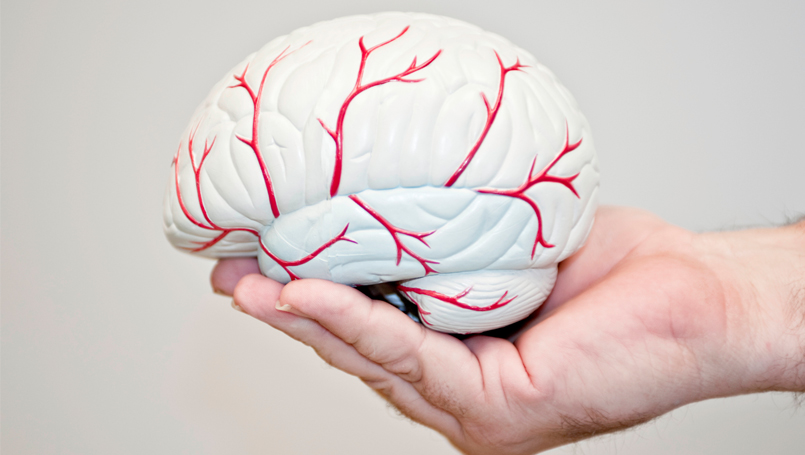
Stroke is one of the top 10 killers in the United States, so chances are, your family has been touched in some way. But, do you know the common and not-so-common symptoms?
It turns out, specific symptoms are the direct result of where the stroke occurs in the brain.
"Most people are left-brain dominant, so strokes to the left side of the brain can be severe," said Amanda Griffith, Beaumont nurse practitioner on the neurosurgery team. "The side of the brain that's dominant is responsible for speech and understanding speech. Typically, the dominant side is determined by what hand you use. Right-handed people are all left-brain dominant, but not all left-handed people are right-brain dominant."
Additionally, you may experience different symptoms based on what kind of stroke you're having.
Ischemic stroke
This is the more common stroke and occurs when blood flow to the brain is cut off causing cells to die. These strokes are often caused by a blockage or clot. "High cholesterol and high blood pressure are usually to blame for an ischemic stroke," said Griffith.
Hemorrhagic stroke
Less common, hemorrhagic strokes happen when a blood vessel in the brain bursts, usually from high blood pressure. Picture filling a balloon with too much air and it pops. That's a hemorrhagic stroke.
WHAT TO LOOK FOR
While the acronym F.A.S.T.E.R. can help with the more common symptoms of droopy face, drifting arms and slurred speech, there are other signals to watch for if you're suspicious of stroke:
- one-sided weakness
- vision changes or loss of peripheral vision: "If you have a stroke on the back of the brain, you'll have a visual field cut on one side of your eyesight," explained Griffith.
- loss of coordination, unsteady gate, dizziness
- sudden onset of nausea and vomiting
- sudden, severe headache especially if you're having a hemorrhagic stroke; it could also be the only symptom
- alertness
- feeling really tired
- numbness and tingling or loss of sensation on one side of the body
So, how do you know if you're at risk for having a stroke? Check your family history. If heart disease or aneurysms run in the family, make sure your doctor knows. Also, if you have high cholesterol or high blood pressure, you could be at higher risk.
"It's important to remember that time is brain when you're dealing with stroke," said Griffith. "If you suspect a loved one is experiencing a stroke, think and act F.A.S.T.E.R. This will give you a good gauge on if you need to call an ambulance or make your way to the emergency center. But with your brain, it's better to err on the side of caution and get checked out."
